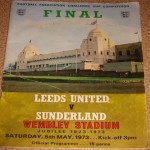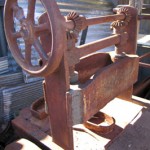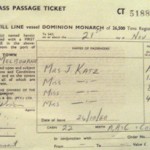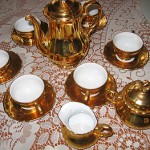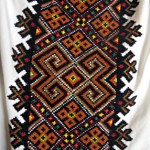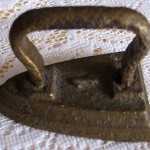Dutch
The Hague, Netherlands
Rotterdam, Netherlands on 14 September 1964
Woolloomooloo, Sydney on 25 October 1964
With friends in Young Street, Croydon in Sydney’s inner west.
Selling silver Dutch souvenirs across Sydney.
Selling cosmetic lines and finally building up our own business Holland House at Smithfield in SW Sydney.
My name is Anna Angenita Cornelia van Altena but I am known as Anita. I was born in The Hague, Netherlands on 16 July 1943, which was during World War Two. My father was married before and had eight children from that marriage. His wife died of cancer and he had the job of raising those children by himself. He worked in a large department store behind the scenes. It was little more than factory work which did not pay enough to support such a large family. Sadly, it became necessary for him to place some of them into orphanages as it had all become too much for him working as well as cooking, washing and ironing for all those children.
When he was 52 he married my mother who was only 32. She was the niece of his first wife. They were wonderful parents and I felt so fortunate to have had such a happy childhood. I was the only child of their marriage [and] fitted into [my father’s] first family quite well. I have only two brothers still living. They both live in the Netherlands and we see each other on visits.
My mother had been very ill right from the beginning of the marriage and had already spent some time in a sanatorium. She sadly died at the age of 55. This crystal and silver perfume bottle and pill box have been in the family for many years. My grandmother owned these lovely pieces which she passed to my mother and they then came to me on the death of my mother. I would never part with them and they will pass to my own family eventually.
The home I had in The Hague was in a very long street and it had a lounge room with sliding doors, a back room, a little balcony, a kitchen and a toilet. I had a small room to myself and the top floor was used by another family.
My [early] pre-school education was in a public school which I really enjoyed. [This] pottery drinking tumbler was produced five years after World War Two ended and most school children in the Netherlands received one. It is of heavy quality and is a memory of the oppression that my country suffered at the hands of the Nazis and the way we survived it all.
Then I went to a public high school where I learnt all types of housekeeping. I liked that because all the women from my family liked handicrafts and my sister had already taught me to knit. I was 15 when I finally left school.
My first job on leaving school was in a material store called Klomp. Clogs in the Netherlands are called ‘klomp’. My boss was a very tough lady but very good to work for. It was a classy shop and as the rolls of fabric came in, the fabric had to be straightened on planks so that it lay perfectly. If it was done incorrectly the boss would unroll it and we would have to start again. After the learning period was over, I was allowed to serve customers and I really loved that. We sold only patterns and fabrics, not haberdashery. The fabrics were mostly brought from Germany but some were made in the Netherlands. I worked there for five years then I went to a dress shop for three years before coming to Australia. I made all my own clothes at that time.
My husband and I were neighbours. [My family] lived at number 205 and then we moved to number 74 and when I was ten [years old], my now husband lived right opposite me at number 57, so we’ve known each other for 50 years.
He was at sea in the merchant navy and [later] went to Rotterdam Lloyd, a company that sailed to Australia. In Holland [there was] compulsory national service for males [and] at that time we were at war with Indonesia in New Guinea. If you had sailed for two years and three months, you were able to sign on for five years and that would leave you out of national service, but as the ship got sold, we all lost our jobs.
He really didn’t want to start on a new ship and work his way up again [for a new employer] so he sent me a letter from Singapore to see if I wanted to migrate to Australia. My reaction was ‘yes’ if we get married first. We had been engaged for five years.
We married in The Hague and it was then, as we planned to leave for Australia, that I found that my mother was terminally ill. I wanted to remain with her but she insisted that as she didn’t have long to live anyway, I should not miss the opportunity to move on. It was very brave of her and I never saw her again as she passed away six months after we arrived in Australia.
We boarded the ship at Rotterdam. We could have sailed on the ship that my husband had sailed on for so many years but he wanted to try a different one. We sailed on an Italian ship named Flavia and I thought, as we left the wharf, that I would never return to the Netherlands. I have returned for visits many times over the years but that day I really felt that I would never see my country again. I was sad but still excited at the thought of a new life in a new country.
We sailed from Rotterdam on 14 September 1964. The ship was large and although it was a passenger liner, it carried migrants, mainly from Holland but also a few Germans. We called in at Bremen in Germany and then to Southampton in England. Already I was very seasick and remained so until we reached Sydney. I felt so miserable that I could not enjoy the shipboard activities.
We crossed the Atlantic Ocean and went through the Panama Canal as the Suez was closed at that time. We also stopped at Curacao in the West Indies and saw my cousin who had a three year contract in the navy there. He drove us around to see the sights. As we crossed the Pacific, we also stopped at Papeete in Tahiti before finally sailing to Australia.
My first impressions of Australia were formed when we stopped in Fremantle and they were not complimentary. I thought that it was so horrible that I would gladly have turned around and returned to Holland immediately. In Holland there had been much rebuilding and there were lovely, modern homes and shops. Fremantle was the opposite and I did not like what I saw. We did not land at Melbourne and Sydney did not look any better to me. We arrived in Woolloomooloo and I can still remember this huge wire fence [with] all these people behind [it], like [caged] monkeys.
There was also much confusion over locating our luggage as they did not know if it came under ‘A’ or ‘V’. The ‘van’ in Holland really means nothing and alphabetically it would not be considered. A passenger told me that the ship would return to Rotterdam the next day and I thought that I would gladly go with her. I did not speak English and felt completely lost although I carried a dictionary all the time. My husband spoke some English though and taught it to passengers onboard the ship.
We arrived in Sydney on 25 October 1964 and landed in Croydon [in Sydney’s inner west]. My husband made contact with people he made friends with while he was [working] on the other ship and they put us up for three weeks at 69 Young Street. They were lovely.
Then we found a rental property in Bankstown [in south-west Sydney] which was half a house. The husband of the people we had stayed with worked at Walton’s department store in Bankstown and he obtained a job for my husband in the menswear department.
We were very comfortable in the Bankstown house so we remained there for six months until the owners returned from overseas. Our first Christmas in Australia was held there. Christmas was very different to Holland as it was very hot here and the food was cold. That took a bit of getting used to.
We then rented an old house in Lakemba for a while before buying our first house at 7 Payton Street, Canley Vale. We remained there for seven-and-a-half years and our two children were born there. As the house in Canley Vale was becoming too small, we later bought a house in Casula where we remained for 25 years.
My husband had become well established at an import company and I started to work as well. We had brought out some silverware, cork stoppers and charms, from near Gouda in Holland, with the intention of starting our own business. My husband would drop me off at Bankstown station in the morning on his way to work and I would catch trains and work all the suburbs calling at shops, taking orders and selling the silver. We began to import more articles such as spoons, keyrings – souvenir type of things. They really did not sell as well as expected at first and we often had trouble getting money from those who owed us. I still have two of the silver cork stoppers we brought with us to begin the business. They are of pure silver and were too pricey for the average Australian so we had to review our plans. One is in the shape of a deer and the other of a sailing ship. They are both used in our home.
I also began selling cosmetic type goods such as tweezers, atomisers and false nails and we finally started to get on our feet. The cosmetics were really the beginning of our shop, Holland House. We initially rented premises on Parramatta Road, Petersham [in Sydney’s inner west] to store our goods, but after a few break-ins we moved above the police station in Bass Hill [in south-west Sydney]. We thought that would be safer, which it was, and we remained there about seven years. From there we branched out into selling gift packs and then hired more premises at Lansvale and became so successful that we bought a warehouse in Market Street, Smithfield. That was in the 1970s and is where Holland House was founded.
The drug companies did not always treat us right and once again we were on the back foot. It was suggested that because we had lots of space in the Smithfield warehouse that we import Dutch furniture. From there it grew. We erected a Dutch façade on the front and other changes gradually such as a small coffee shop and brought in many types of Dutch souvenirs and foods for sale. We fly the Australian and Dutch flags.
Holland House has expanded so much and we sell so many types of items. We began by importing Dutch goods such as Delftware and clogs and we sell dozens of varieties of liquorice and other foods. We also have foods and other items that are special to Christmas and other Dutch festivals. The Dutch Australian Culture Society holds language classes there and genealogy classes are as well.
I still have some objects from my immigration and they are an important reminder of other days in my old homeland.
Delftware was made in the 16th to 18th centuries and is known worldwide as the lovely blue and white pottery which comes from Delft in the Netherlands. My favourite piece is in the shape of a violin which I brought out when we migrated. It is a fine example of Delft and beautifully made and is a wonderful memory of my homeland. I also have a vase which is particularly fine and two lovely wall plaques. I would never part with any of these pieces as they are the best quality and are my memory of my old home.
I also brought some clogs with me when I migrated. They are made of wood, probably willow or poplar, and are hand painted in folk art style. Clogs are typical of Holland and can be bought all over the country and these are my favourites.
Our clientele at Holland House are from many nationalities and we even have small bus groups coming through. We now have a Dutch shop in Brisbane and my son has opened a similar shop in Perth. When asked recently by a Dutch TV group if I would consider going home to live, my answer was, “No way! We don’t belong there any more”. The homesickness lasted five years. [Holland] is nice for a two week holiday [but] it’s too small there, there’s too many people on a small piece of land. What we have here is space and lots of sunshine. We made the right choice.





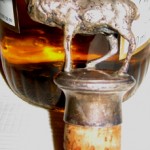
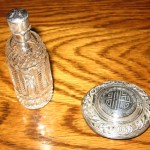
!["[This] was produced five years after World War Two ended and most Dutch school children in the Netherlands received one. It is my memory of the oppression my country suffered at the hands of the Nazis and the way we survived it all."](../../../cms/wp-content/uploads/2010/01/altena-tumbler-150x150.jpg)
!["Delftware was made in the 16th to 18th centuries and comes from Delft in the Netherlands. I would never part with [this vase] which is particularly fine."](../../../cms/wp-content/uploads/2010/01/altena-vase-150x150.jpg)
!["Delftware is the lovely blue and white pottery which comes from the Netherlands. [This plate is a] memory of my old home."](../../../cms/wp-content/uploads/2010/01/altena-plate-150x150.jpg)
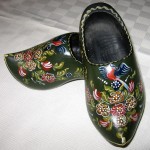
!["My favourite Delftware piece is in the shape of a violin which I brought out when we migrated. It is a fine example of Delft and beautifully made. [It] is well loved and creates memories of Holland."](../../../cms/wp-content/uploads/2010/01/altena-violin-150x150.jpg)
